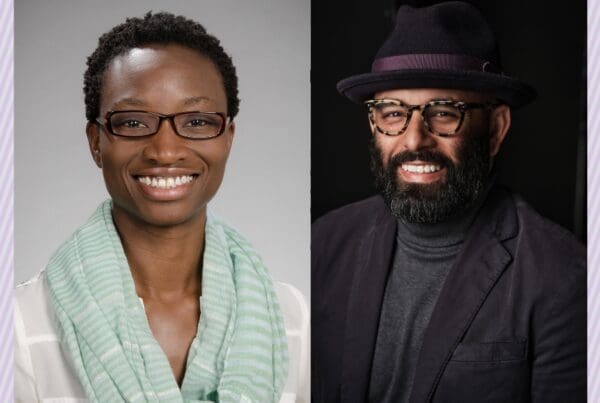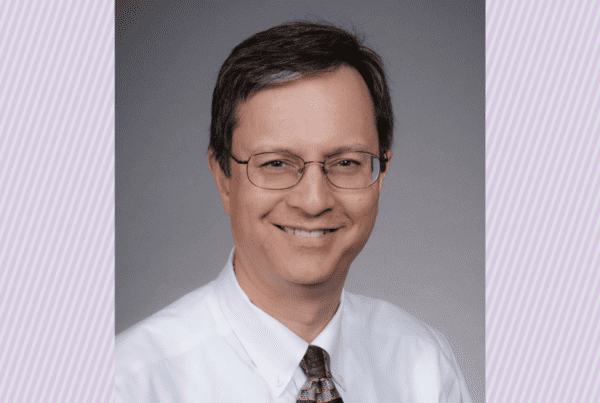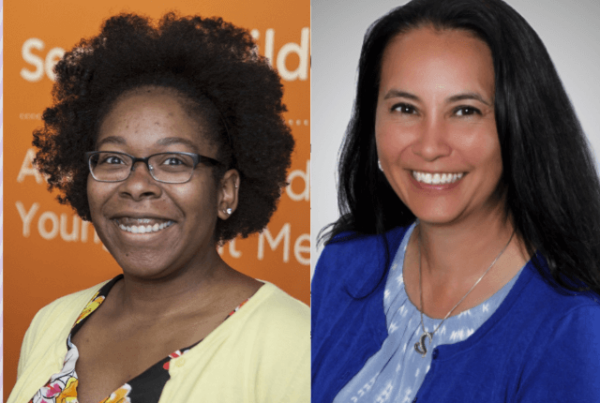How do you help those who are most in need and make lasting, impactful change? That’s the question Paul James, MD — the chair of family medicine at the University of Washington School of Medicine — has worked to answer his entire career. His desire to find better ways of helping patients continues to drive him forward.
Growing up on a farm in North Carolina, James saw firsthand how rural populations lack adequate access to healthcare. So he decided to become a family medicine physician, eventually returning to practice in his hometown. While there, he witnessed devastating health consequences for uninsured patients and those who lacked access to primary care, spurring him to return to academia so he could effect change on a larger scale.
He became an expert on clinical practice guidelines and co-chaired the Eighth Joint National Committee on hypertension for the Journal of the American Medical Association (JAMA). The committee’s report for the management of high blood pressure was identified as one of the top 10 most important articles of the last decade for clinical medicine and public health.
James discusses this recognition, why he chose a career in medicine and how he hopes to inspire change.
How did your upbringing influence your decision to go into medicine?
I grew up in rural North Carolina where there were very few doctors, and I remember access to healthcare being quite limited. I remember wishing that a sick family member simply had the opportunity to see a doctor before their death. The pain of witnessing those in need and feeling helpless influenced me to enter medicine. In retrospect, I am thankful for these experiences and can only imagine the pain felt by those less fortunate as my family was perhaps one of the most privileged in the community.
My parents were public school teachers and played an important role in leading the integration of public schools in the rural South. This was a time of enormous change requiring special skills and resilience. My parents taught me the important lesson of being a role model, showing other parents and children in the community that a “white” kid could attend a “black” school and receive a good education. I did not appreciate at the time how these experiences would influence my notions of social justice, and inform my commitment to diversity, equity and inclusion.
What did you learn practicing rural medicine?
After residency, I practiced family medicine in the clinic where I was born. The family doctor that delivered me gave me a weathered old print that hung on his wall as my gift for returning “home.” This picture hangs in my academic office today as a reminder of the, at times, impossible work that these rural doctors do. I practiced there for five years and wrestled with the inequities that my patients faced as they sought help for basic needs, such as treatment of high blood pressure.
Before Obamacare, very few farm laborers in the rural South would qualify for insurance coverage of any kind, including Medicaid, and these were disproportionately people of color. High blood pressure is more prevalent in the black population who represented a majority of my patients. I had several black men in their 30s and 40s who suffered massive cerebral hemorrhages — a particularly devastating form of stroke — from uncontrolled high blood pressure. At that point, I would then care for them in nursing homes because they then qualified for Medicaid. I realized that a better performing healthcare system would provide them the necessary medications to prevent this, allowing them to live productive lives. It became clear that I needed to develop strategies that might improve our healthcare system and that meant learning the skills of an academic physician.
The reason why I’m in academic medicine is largely related to my frustration in solving my patients’ health challenges because of inequities and disparities in the healthcare marketplace.
How did you become involved in the guidelines for management of high blood pressure?
I entered academics to improve healthcare for vulnerable populations such as those rural America. However, grant funding mostly supported chronic disease management and evidence-based guidelines. I studied these through funding while at the State University of New York at Buffalo. I developed expertise in measuring quality of care and implementing guidelines in practice, especially for cardiovascular disease. The National Heart, Lung, and Blood Institute was embarking on a new plan to develop evidence-based guidelines, and planners of this endeavor were intrigued by the approaches that I used.
The JNC-8 panel worked from 2008 until 2014, and it became a bigger project than anyone anticipated. My co-chair and I spent considerable time managing not only the scientific conduct of the process but also the complex environment that resulted from the diversity of our panel. I now have a new appreciation for the volunteer effort required from such work.
Why do you think this article was chosen by JAMA as one of the most important of the last decade?
There was controversy that accompanied this publication, and competing guidelines have since been released, some that differ from this report.
One of the lessons from this report is that while it may be imperfect to some, it examined the problem of high blood pressure through a multitude of lenses. Diversity of the panel insured that voices of different constituencies and communities of clinicians and researchers were heard. It is no small feat that this report was published in the face of opposition by special interests.
Over the last 30 years, a consistent pattern has developed that is reflected in this report — a divide between the evidence-based methodologies used by the primary care community and those by specialty and advocacy organizations. There are controversies that now accompany almost every type of screening, from cancer to cardiovascular disease such as blood pressure measurement. This highlights a fundamental challenge for clinical science and translation of research findings into clinical practice. Better understanding of how to improve the integration of specialty disease-centered care with patient-centered primary care is an important research opportunity that our department of family medicine will study to improve the health of the public.
How is the family medicine department working to improve healthcare delivery and equity?
I’m very proud of this department — it’s a national treasure for the discipline of family medicine. One of our goals is to work with UW Medicine to transform the healthcare delivery model. That means delivering the right care at the right time and at lower costs to patients in a way that meets their expectations.
Our opportunity within UW Medicine is to build better relationships between primary and specialty care. This means that we must align our work like this guideline in ways that improve the health of the public. How do we translate research that UW Medicine, the University of Washington and other universities around the world are doing into highly effective care that meets patient needs? This is an important area of practical and applied investigation. As we understand how to apply research findings to practice, we then can innovate and create a brighter future of for healthy populations.
We have world-renowned educational programs across Washington, Wyoming, Alaska, Montana and Idaho (WWAMI), and I am committed to building on these strengths to improve the health of the region through our educational mission.
We will also advance efforts to create high-performing teams in primary care. It is vital that we create a model that effectively allows clinicians and staff to have meaningful work that they enjoy while anticipating patient needs. Team-based care means finding the best strategies to partner with physician assistants, nurse practitioners, clinical pharmacists, clinical behavioral health specialists, social workers and others to ensure that we’re always delivering the highest quality of care that’s accessible to patients.


